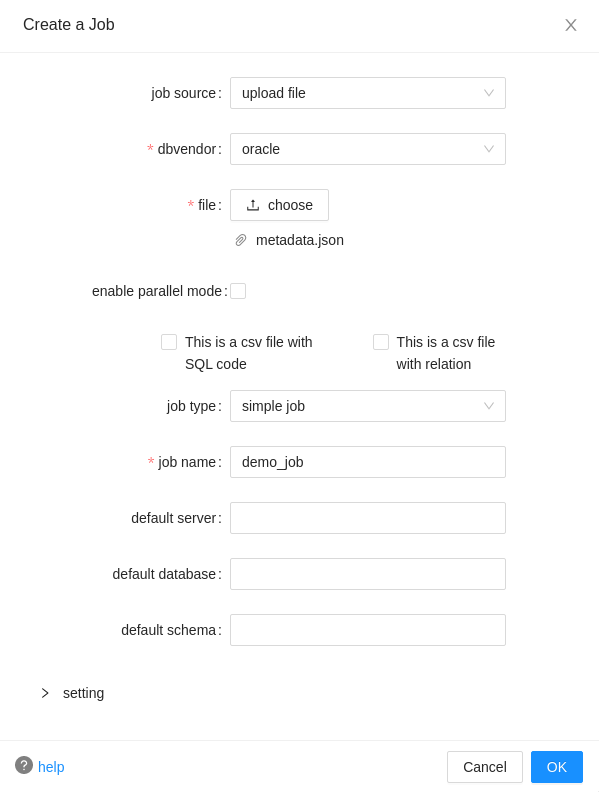Handling Internal Database¶
If your database is deployed in an internal network and is not accessible for external connection, you may not be able to read your internal database directly from the public SQLFlow server.
You can use SQLFlow on-premise version to connect your database(Read here for how to install) or you can try with the belowing approach:
Use sqlflow-ingester to export the database metadata file.¶
1 2 3 4 5 6 7 8 | |
You may want to check here for more possible inputs.

You will receive the message if the export is succeeded:
1 | |
Check your output folder and you shall find your metadata.json:

Create sqlflow job by uploading that metadata file on our SQLFlow UI.¶
With the exported metadata.json, we are now ready to retrieve data lineage.
Open your browser and go to our SQLFlow UI, then create a Job with the Job Source as upload file:

Read more details on how to create the job and what do these parameters stand for here.
You may want read more about the job type.

Check the lineage overview/detail once the job is finished.
Use SQLFlow On-Premise Version¶
Cloud and On-Prem